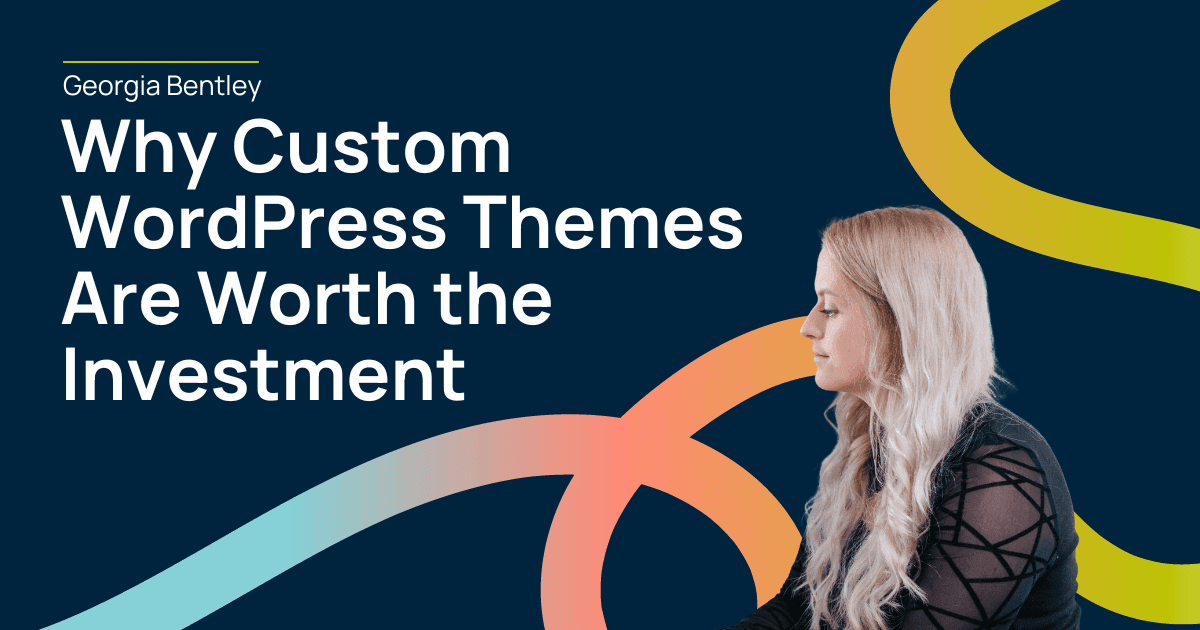WordPress is the world’s most widely used content management system. It powers 43.3% of all websites and 60.7% of sites using a known content management system, as measured on 6 October 2025. At Capsule, we pride ourselves on WordPress specialists who integrate WordPress structure with ANY design, always providing your business a unique offering.
A Quick Introduction
Millions choose WordPress because it is easy to use, endlessly extendable, and supported by a global community of developers and creators. Themes set the visual identity and the structural layout of a site. Businesses usually pick between a pre-made theme and a custom theme. Pre-made themes are quick to launch and relatively affordable. Custom themes demand more planning but deliver stronger performance, brand control, and return over time.
The Appeal of WordPress
- Ease of use – Non-technical editors can publish quickly, manage media, and update pages without developer help.
- Scalability – WordPress serves everything from small portfolio sites to major publishers and enterprise content hubs.
- Community and plugins – There is an unmatched ecosystem of extensions, patterns, and documentation for any use case. The official theme and coding standards create a shared baseline for performance, accessibility, and security when followed.
- Themes define identity – A theme is the presentation layer. It controls layout, typography, and reusable templates. Clean theme architecture reduces reliance on heavy page builders, keeps code maintainable, and improves speed.
WordPress Compared with Other Platforms
WordPress vs Wix
Wix offers an all-in-one subscription with guided setup and strong built-in tools. WordPress provides deeper control, a larger ecosystem, and full ownership of code. Wix is simpler for beginners, whereas WordPress scales further when you need custom features, integrations, and optimised performance.
WordPress vs Drupal
Drupal has an excellent security process and a long record of enterprise adoption. It suits complex permissions, structured content, and multi-site governance. Drupal is generally expensive, and requires high technical capabilities to edit, update and customise. WordPress is typically faster to design and build and can match enterprise needs with professional engineering at a lower cost.
WordPress vs Squarespace
Squarespace shines for elegant templates and managed hosting. Custom code is possible, yet advanced changes may fall outside official support, and some developer tooling is only available in specific versions. WordPress offers full-stack control and freedom to implement any pattern your brand or product requires. Full flexibility for any-sized business.
So overall?
Across these platforms, WordPress remains the most flexible route when you need full code access, a broad talent pool, and the ability to optimise every part of the stack, from theme architecture to server configuration. The market share numbers above reflect that reality. At Capsule, we live day in, day out in WordPress and very rarely jump into other content management systems; the proof is in the pudding, as they say!
So What About Off-the-shelf Themes?
Convenience at a cost
Pre-made themes are inexpensive, quick to set up, and offer a gallery of layouts. For small projects with simple requirements, they can be a good first step. Or perhaps you don’t quite have the budget to invest yet, you can set up your own site using page builders like Elementor.
Many popular themes include features for every possible audience. That can mean extra scripts, large style sheets, and overlapping page builder logic. The result is slower pages, limited design freedom, and inconsistent editing experiences. Security is another factor. Headlines in 2025 included active exploits in certain commercial themes and widely used plugins. Keeping only what you need and updating promptly is essential.
Why this matters for search and sales
Google recommends achieving good Core Web Vitals for success in Search and for a better user experience. Faster pages increase engagement and lower bounce rates. Independent studies show a strong link between speed and conversion. A site loading in one second can convert at a much higher rate than one taking five seconds. Even a tenth of a second improvement has moved key metrics in retail and travel.
So, The Overall Question of why a Custom WordPress Theme is Worth it
- Unique branding – A custom theme encodes your brand system into components, templates, and patterns that editors can reuse. No template look, no design repetition.
- Optimised performance – Lean templates, selective script loading, and minimal plugin reliance reduce page weight and improve Core Web Vitals. Google’s guidance is clear on target thresholds for Largest Contentful Paint, Interaction to Next Paint, and Cumulative Layout Shift.
- Better search and security – Themes built to WordPress coding standards and theme guidelines avoid common errors, keep markup clean, and simplify audits. Reducing plugin count lowers the attack surface, while disciplined updates address known issues quickly.
- Scalability and flexibility – Custom themes are designed around your roadmap. You can add new content types, integrate product feeds, or connect to business systems without fighting a general-purpose template. The structure remains tidy as your site grows.
- Lower total cost of ownership – A custom foundation saves ongoing effort. Instead of constant patching, theme rewrites, and workarounds, your team ships new features into a codebase made for your brand.
Real-world Return on Investment
Speed and revenue are linked. Deloitte’s study across retail, travel, luxury, and lead generation found that a tenth-of-a-second improvement on mobile correlated with meaningful gains in conversion and spend. Portent’s research shows sites that load in one second can convert at a multiple of those loading in five seconds. Faster pages also reduce bounce probability, as shown in Google and Think with Google analyses.
Security and stability improve with a curated stack. Annual WordPress security reporting highlights that most issues arise in third-party extensions and are managed through responsible disclosure and updates. A custom theme that limits dependencies and follows standards makes patching simpler and reduces risk.
Editor productivity rises. Clear pattern libraries and purposeful templates mean less time wrestling with layout and more time shipping content that drives growth.
When to Choose a Custom Theme
Consider a custom build when your traffic is growing, you are refreshing the brand, you have performance issues, or your site relies on many overlapping plugins and page builders. Balance the initial investment against long-term gains in speed, search, security, and editor velocity. The payback comes from better user experience, improved rankings, and higher conversion over the life of the site.
Short Case Notes
Performance-led redesign
A UK ecommerce brand rebuilt a heavy theme into a lean custom pattern library and optimised media. After launching the site passed Core Web Vitals at scale and increased completed checkouts. This aligns with widely reported relationships between speed and conversion documented by Deloitte and Portent.
Security hardening
An organisation migrated from a popular commercial theme to a bespoke theme and removed unused plugins. Routine updates became simpler. Exposure to headline extension issues has been reduced, mirroring best practice advice to keep only necessary components and update promptly.
Search uplift
A services firm implemented a clean information architecture, semantic templates, and structured data. Organic engagement improved with lower bounce and more form completions, consistent with published case patterns where technical quality supports better outcomes.
What to Expect When Working with Specialists
- Discovery and audit – Map business goals, user journeys, and technical debt.
- Theme architecture – Design a component system and template set aligned to brand and conversion goals.
- Performance budget – Set strict budgets for scripts, styles, and images. Measure against Core Web Vitals.
- Security and maintenance – Adopt coding standards, limit dependencies, and plan updates.
- Training and handover – Enable your team to publish fast with confidence.
Frequently Asked Questions
What is the difference between a theme and a page builder?
A theme is the presentation framework. A page builder is a tool that adds layout controls in the editor. A custom theme can include flexible components without the weight of a general-purpose builder.
Will a custom theme help search?
Yes, when it improves Core Web Vitals, cleans markup, and structures content for rich results. Google recommends achieving good Core Web Vitals for success in Search.
Are plugins still required?d
Often yes. The goal is to keep only what you truly need, choose well-maintained extensions, and move common features into the theme where appropriate standards allow. Security reporting shows that careful dependency choices reduce risk.
How long does it take to see a return?
Teams usually see early gains as soon as the new theme ships, with compounding benefits as content velocity and search equity grow.
If you are planning a new site, a rebrand, or you want stronger performance, speak with the WordPress specialists at Capsule. We will audit your current setup, define a performance budget, and design a custom theme that is fast, secure, and built to convert.




